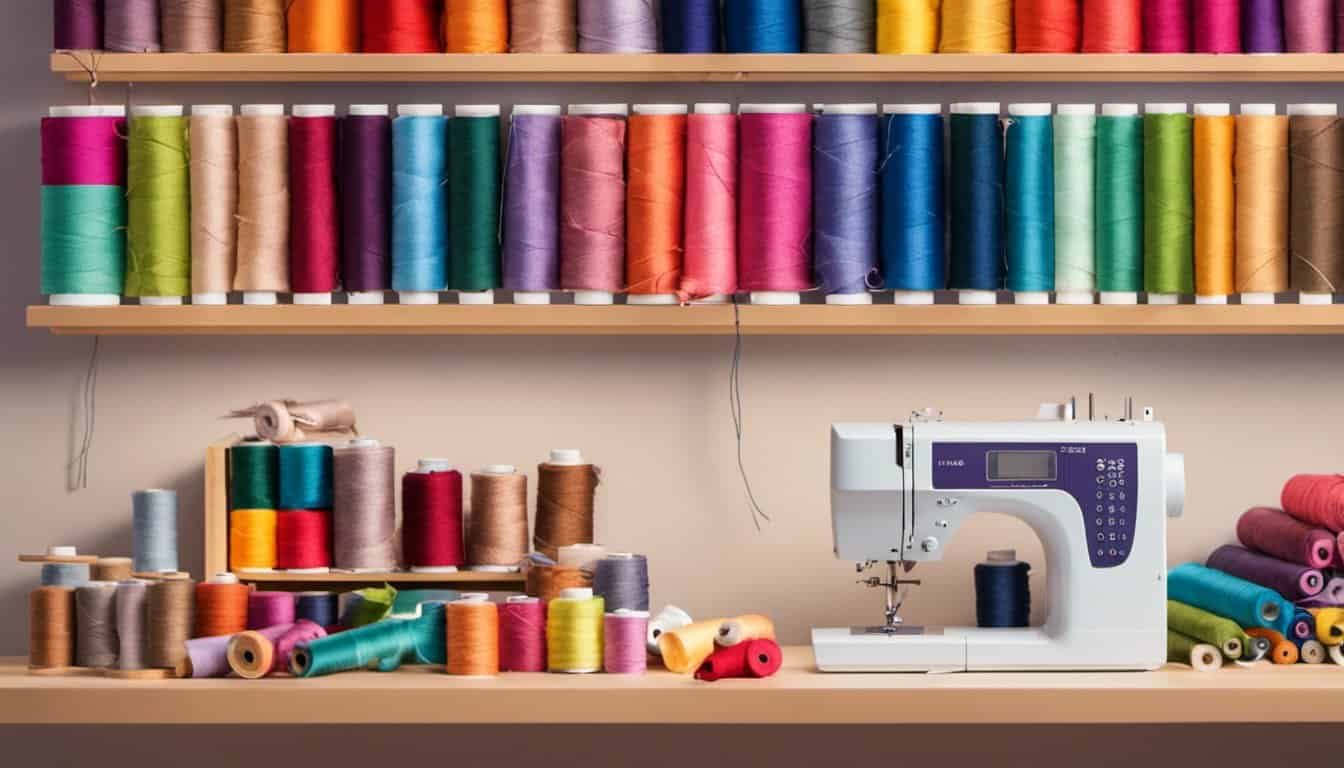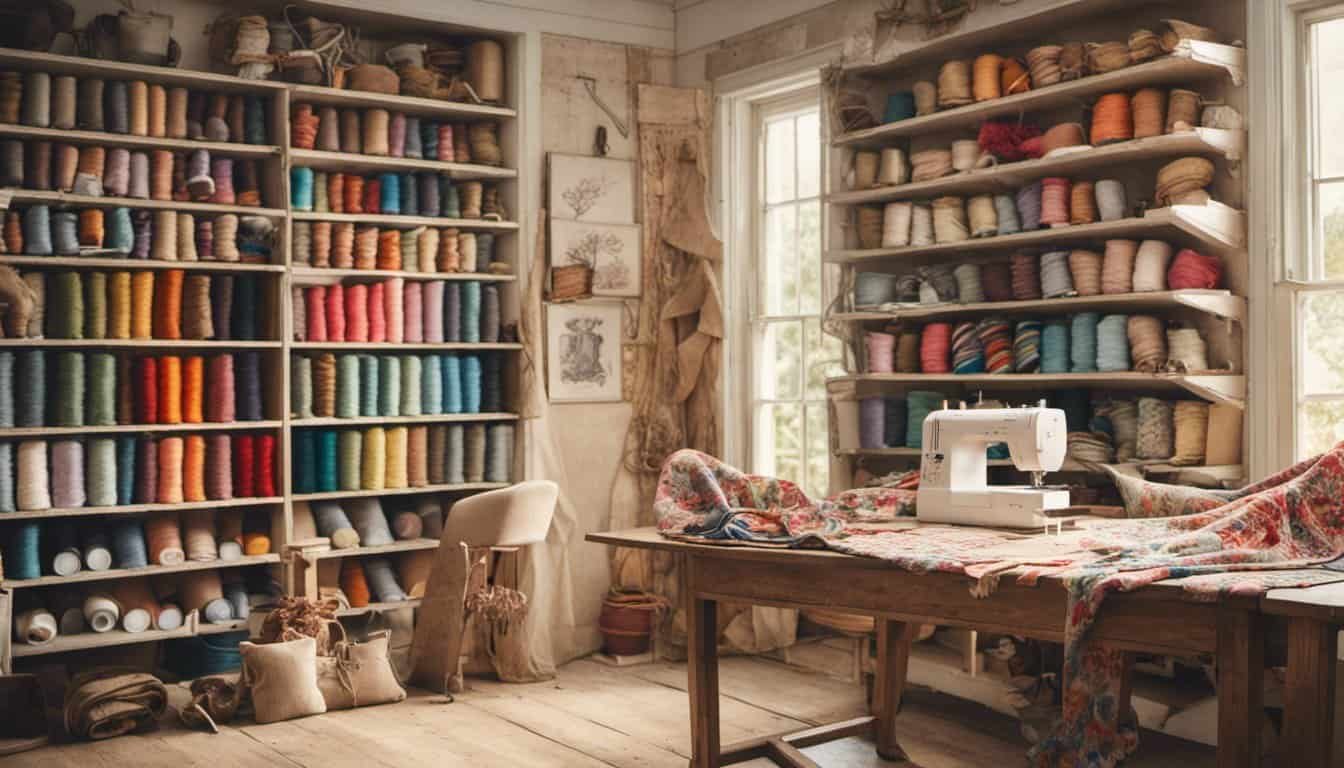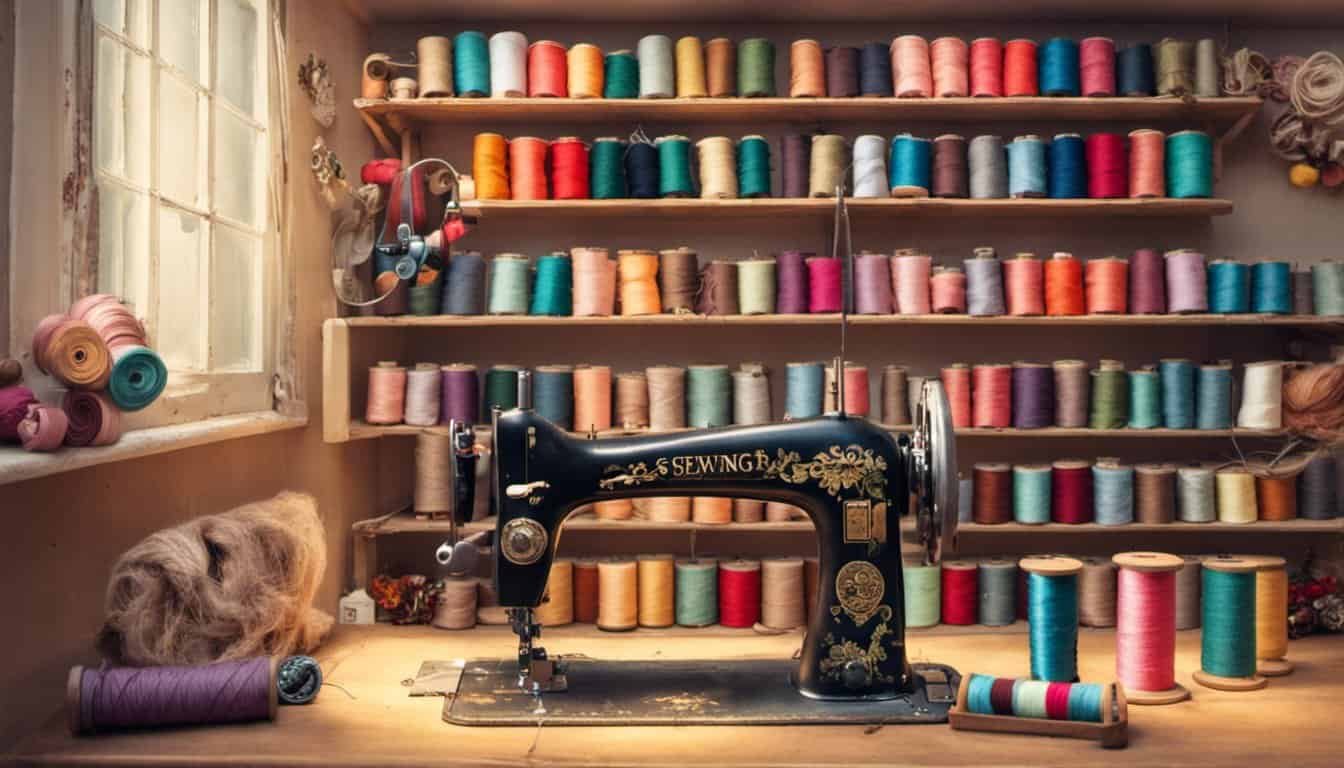Keeping your fabric scissors sharp is essential for achieving clean and precise cuts every time you sew or craft. Dull blades can lead to frayed edges and uneven seams, making your projects more frustrating than fun. The good news is, you don’t need to be a professional to sharpen your scissors at home.
With a few simple tools and easy steps, you can restore your scissors’ sharpness and extend their lifespan. Whether you’re a seasoned tailor or a DIY enthusiast, maintaining your scissors ensures they perform their best for all your creative endeavors. Let’s dive into the straightforward methods that will have your fabric scissors cutting smoothly in no time.
Importance Of Sharp Fabric Scissors
Sharp fabric scissors ensure clean and precise cuts, enhancing the quality of your sewing and crafting projects. Dull blades cause frayed edges, uneven seams, and increased fabric waste, leading to frustration and additional work. Maintaining sharp scissors improves your efficiency, allowing you to complete tasks faster with fewer mistakes. Additionally, sharp scissors reduce the risk of fabric slipping, providing better control and accuracy. Keeping your scissors sharp extends their lifespan, saving you money on replacements and professional sharpening services. Properly maintained scissors contribute to a smoother workflow, boosting your overall productivity and enjoyment in your creative endeavors.
- Clean Cuts: Achieve smooth, straight edges without fabric distortion, essential for professional-looking results.
- Precision: Make intricate and detailed cuts accurately, crucial for complex patterns and embellishments.
- Efficiency: Cut through multiple layers easily, reducing the time spent on each project.
- Safety: Minimize the chance of accidental slips or snags, promoting a safer crafting environment.
- Tool Longevity: Preserve the sharpness and condition of your scissors, lowering the frequency of replacements.
Signs Your Scissors Need Sharpening
Recognizing when your fabric scissors need sharpening ensures your cutting remains precise and effortless. Here are key indicators to watch for:
- Dull Cutting Performance
Scissors struggle to slice through fabric smoothly. If you notice resistance or require extra force, it’s time to sharpen.
- Frayed or Uneven Edges
Dull blades cause fabric to fray or create jagged edges. Clean, straight cuts signify sharp scissors.
- Skipped or Torn Threads
When scissors skip over threads or tear fabric instead of cutting, sharpness is compromised.
- Misaligned Blades
If the blades no longer align properly, causing uneven cuts, sharpening or realignment is necessary.
- Increased Effort Needed
Cutting multiple layers or thick fabrics becomes difficult when scissors are dull, indicating a need for sharpening.
- Visible Wear on Blades
Inspect scissors for visible signs of wear, such as nicks or corrosion, which can dull the edges.
- Reduced Cutting Speed
Sharp scissors allow for quicker cutting. A noticeable slowdown suggests the blades need maintenance.
Monitoring these signs will help maintain the efficiency and precision of your fabric scissors, enhancing your sewing and crafting projects.
Tools You’ll Need
To sharpen your fabric scissors at home, gather the essential tools listed below. Each tool plays a crucial role in restoring your scissors’ precision and longevity.
Choosing The Right Sharpening Tool
Select a sharpening tool that matches your scissors’ blade type and material. Common options include:

- Sharpening Stones: Ideal for maintaining the edge of stainless steel scissors.
- Scissor Sharpeners: Designed specifically for scissors, ensuring the correct angle.
- Electric Sharpeners: Offer quick and consistent sharpening with minimal effort.
Ensure the tool you choose provides a smooth finish to prevent damaging the blades.
Safety Precautions
Prioritize safety while sharpening to prevent accidents and protect your tools:
- Wear Protective Gloves: Shield your hands from sharp edges and tools.
- Secure Your Work Area: Use a stable surface to avoid slips during sharpening.
- Handle Tools Carefully: Follow manufacturer instructions to prevent tool-related injuries.
- Keep Tools Clean: Remove any fabric or debris from scissors before sharpening to maintain effectiveness.
Adhering to these precautions ensures a safe and efficient sharpening process.
Step-By-Step Sharpening Process
Follow these steps to sharpen your fabric scissors effectively at home.
Cleaning Your Scissors
- Remove Debris: Wipe the blades with a damp cloth to eliminate fabric fibers and dust.
- Disassemble Blades: If possible, separate the blades to access all surfaces.
- Soak in Soapy Water: Submerge the blades in warm, soapy water for 5 minutes to loosen stubborn residue.
- Scrub Gently: Use a soft brush to clean the blades thoroughly, ensuring no particles remain.
- Dry Completely: Pat the blades dry with a clean towel to prevent rusting.
Sharpening The Blades
- Select a Sharpening Stone: Choose a fine-grit sharpening stone suitable for metal blades.
- Maintain Angle: Hold the scissors at a 45-degree angle against the stone.
- Move Smoothly: Slide each blade along the stone in a consistent, sweeping motion.
- Repeat Process: Perform 10-15 strokes on each side to achieve a sharp edge.
- Check Sharpness: Test the edge on paper; it should cut cleanly without tearing.
Honing For A Smooth Edge
- Choose a Honing Tool: Use a leather strop or a honing rod to refine the blade edge.
- Apply Gentle Pressure: Run each blade along the strop or honing rod with light pressure.
- Maintain Consistency: Ensure uniform strokes to evenly polish the edge.
- Remove Burrs: Continue honing until all rough edges and burrs are eliminated.
- Final Inspection: Verify the smoothness and sharpness of the blades by cutting fabric samples.
Maintenance Tips For Longevity
Extend the life of your fabric scissors with these essential maintenance tips:
Clean After Each Use
« Indian Embroidery: Mastering Zari Work – Unlock Timeless Elegance Today
10 Secrets to Choosing the Perfect Sewing Certification Program »
Remove fabric fibers by wiping the blades with a soft cloth. For stubborn debris, use a brush to gently clean between the blades.
Store Properly
Keep scissors in a protective case or sheath to prevent damage. Store them in a dry area to avoid rust and corrosion.
Sharpen Regularly
Maintain cutting precision by sharpening blades every few months or when performance declines. Consistent sharpening reduces the need for frequent replacements.
Lubricate the Pivot
Apply a few drops of oil to the pivot point to ensure smooth operation. Lubrication prevents stiffness and minimizes wear on moving parts.
Avoid Cutting Hard Materials
Use scissors exclusively for fabric. Cutting materials like cardboard or plastic can dull or damage the blades, reducing their effectiveness.

Inspect Frequently
Regularly check for blade alignment and handle integrity. Address any misalignments or loose screws immediately to maintain optimal performance.
Protect from Moisture
After cleaning, ensure scissors are thoroughly dried. Moisture can lead to rust, compromising blade sharpness and overall durability.
By following these maintenance practices, your fabric scissors remain sharp, reliable, and efficient for all your sewing and crafting projects.
Alternatives To DIY Sharpening
If sharpening fabric scissors at home isn’t ideal, consider these alternatives:
Professional Sharpening Services
Professional sharpeners use specialized equipment to ensure precise edges. They handle various scissor types, including those with high-quality blades. Services often offer quick turnaround and guarantee sharpness, extending the lifespan of your scissors.

Scissor Replacement
When scissors are too worn or damaged, replacing them ensures optimal performance. High-quality scissors retain their sharpness longer and provide better cutting accuracy. Investing in a new pair can enhance your crafting efficiency and reduce frustration.
Investing in High-Quality Scissors
Premium scissors require less frequent sharpening and maintain their edge longer. Brands like Gingher and Fiskars offer durable options tailored for fabric cutting. Choosing high-quality scissors can minimize maintenance needs and improve your crafting experience.
Utilizing Specialized Cutting Tools
For specific tasks, specialized tools like rotary cutters or electric scissors can serve as alternatives. These tools often provide consistent cuts without the need for regular sharpening, ideal for certain fabric types and intricate designs.
Subscription to Maintenance Plans
Some retailers offer maintenance plans that include regular sharpening and inspections. Subscribing ensures your scissors remain in top condition without the hassle of DIY methods. These plans often come with benefits like priority service and discounts on future purchases.
Repair Shops and Tailors
Local repair shops and tailors frequently offer scissor sharpening services. They provide personalized service and can address unique scissor types. Supporting local businesses ensures quality workmanship and fosters community connections.

Online Sharpening Services
Several online services accept your scissors, sharpen them professionally, and return them to you. This option offers convenience and access to expert sharpening without leaving your home. Compare reviews and turnaround times to choose a reliable service.
Scissor Sharpening Kits
If you prefer minimal DIY, scissor sharpening kits offer guided tools and instructions. These kits simplify the sharpening process, ensuring effective results with less effort. They are a suitable middle ground between full DIY and professional services.
Blade Replacement
For scissors with replaceable blades, purchasing new blades restores cutting performance without full sharpening. This option is cost-effective and straightforward, especially for high-use scissors. Ensure compatibility with your scissor model before purchasing.
Utilizing Multi-Purpose Tools
Some multi-purpose tools, like electric sharpeners, offer quick and easy sharpening for various blade types. These tools automate the process, reducing the time and skill required. They are ideal for maintaining multiple pairs of scissors efficiently.
| Alternative | Description | Benefits |
|---|---|---|
| Professional Sharpening | Specialized services for precise edges | Ensures sharpness, extends scissor lifespan |
| Scissor Replacement | Buying new, high-quality scissors | Enhanced performance, reduces maintenance |
| High-Quality Scissors | Investing in durable, premium brands | Less frequent sharpening, better accuracy |
| Specialized Cutting Tools | Using rotary cutters or electric scissors | Consistent cuts, no regular sharpening needed |
| Maintenance Plans | Subscriptions offering regular sharpening and inspections | Convenience, priority service |
| Local Repair Shops | Tailored sharpening services from local businesses | Personalized service, supports community |
| Online Sharpening Services | Professional sharpening with mail-in options | Convenience, expert results |
| Sharpening Kits | Guided DIY kits for easy sharpening | Simplifies process, effective results |
| Blade Replacement | Purchasing and installing new blades | Cost-effective, restores performance |
| Multi-Purpose Tools | Electric or automated sharpeners for various scissors | Time-efficient, suitable for multiple scissors |
Conclusion
Keeping your fabric scissors sharp makes a big difference in your sewing and crafting projects. When your scissors are sharp you cut smoothly and accurately which saves you time and reduces frustration Sharpening them at home is easier than you think with the right tools and a little practice

By maintaining your scissors you ensure they last longer and perform better every time you use them Enjoy the benefits of precise cuts and a more enjoyable crafting experience Start sharpening today and see the difference it makes in your creative work



![Won't You Be My Neighbor? [Blu-ray]](https://m.media-amazon.com/images/I/51-wp0x3h-L._SL500_.jpg)
![Won't You Be My Neighbor? [DVD]](https://m.media-amazon.com/images/I/41orN06tn1L._SL500_.jpg)












